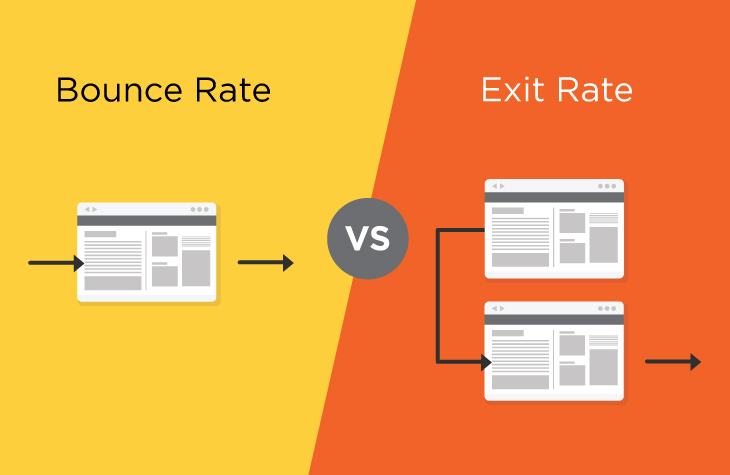You pivot, filter, compare, repeat, and you’re still not sure if your web pages are working or not. There’s no point in beating your keyboard to a buttony pulp—many marketers struggle to measure engagement with content or product pages.
Though there are many reasons why this is difficult, one of the most common is that you’re using the wrong measurement. It’s a conflict as old as the Internet herself: how do you measure (dis)engagement, using bounce rate or exit rate?
The answer is… it depends.
What is Bounce Rate and How is it Measured?
It’s very easy to get bounce rate and exit rate confused. The difference between them may be tricky to grasp, but it’s an important one.
A “bounce” refers to website visitor exiting their initial page visit without interacting with any of its elements or visiting any other pages on that website. The bounce rate is calculated by taking the total number of bounces divided by the total number of page views, giving you a percentage of single-page sessions.
For example, say you create a landing page for a marketing campaign and want to know the bounce rate for that page over a one-week period. If you get 1,000 visits, and 800 of those only visited the landing page and didn’t click on any links, fill out any forms, or otherwise engage with the site, then your bounce rate is 80%. Clearly–in this case–you need a better landing page.

What is Exit Rate and How is it Measured?
A web page’s exit rate is the percentage of multi-page browsing sessions that ended with that particular page. In other words, how many visitors stopped engaging with your site and departed after they reached that page. Divide the total number of exits by the total number of page views, and you’ve got the exit rate for a page.
So the exit rate is for pages that were the last visit in a user’s session, and the bounce rate is for pages that were the only visit in a user’s session.
Let’s look at a day in the life of a hypothetical website and calculate the bounce and exit rates for its pages.
- Visitor A lands on the “Home Page” from a search engine, clicks on the “About Us” page, and leaves.
- Visitor B lands on a “Product Info” page from an affiliate link and leaves immediately.
- Visitor C lands on the “Home Page” from a search engine, clicks on a “Product Info” page, clicks on the “About Us” page, and leaves.
- Visitor D lands on a “Product Info” page from a search engine, and leaves immediately.
- Visitor E lands on the “Home Page” from a search engine, clicks on a “Product Info” page, places an order, is redirected to the “Order Confirmation” page, and leaves.
What would the Google Analytics report look like for each page?
- Home Page: 3 entrances, 3 page views, 0% bounce rate, 0% exit rate.
- About Us Page: 0 entrances, 2 page views, 0% bounce rate, 100% exit rate.
- Product Info Page: 2 entrances, 4 page views, 50% bounce rate, 0% exit rate.
- Order Confirmation Page: 0 entrances, 1 page view, 0% bounce rate, 100% exit rate.
This example highlights the importance of looking beyond the raw numbers when it comes to interpreting what these metrics mean. The 100% exit rate for the Order Confirmation Page shouldn’t necessarily concern us, but the same percentage on the About Us Page might make us wonder if there’s something about that page that’s turning visitors off.

When Should You Measure Bounce Rate?
Bounce rate is a key metric for gauging visitor interest in your landing pages or blog pages. These are the pages your users will typically arrive at first with a specific intent. If they’re not succeeding at capturing users’ interest and getting them to interact with the content, that’s a problem that needs to be addressed.
When it comes to organic or SEM traffic, bounce rates should be given special attention. The reason is that search traffic usually lands with a purpose in mind. Therefore, it can exit from the same page but the journey would be considered a success. However, if organic traffic bounces without engaging your content then this is an issue. So, when it comes to search traffic, bounce rate is what you want to measure.
It can also be useful to track changes in the bounce rate when you make modifications to a landing page, in order to see if they’re achieving the desired results.



